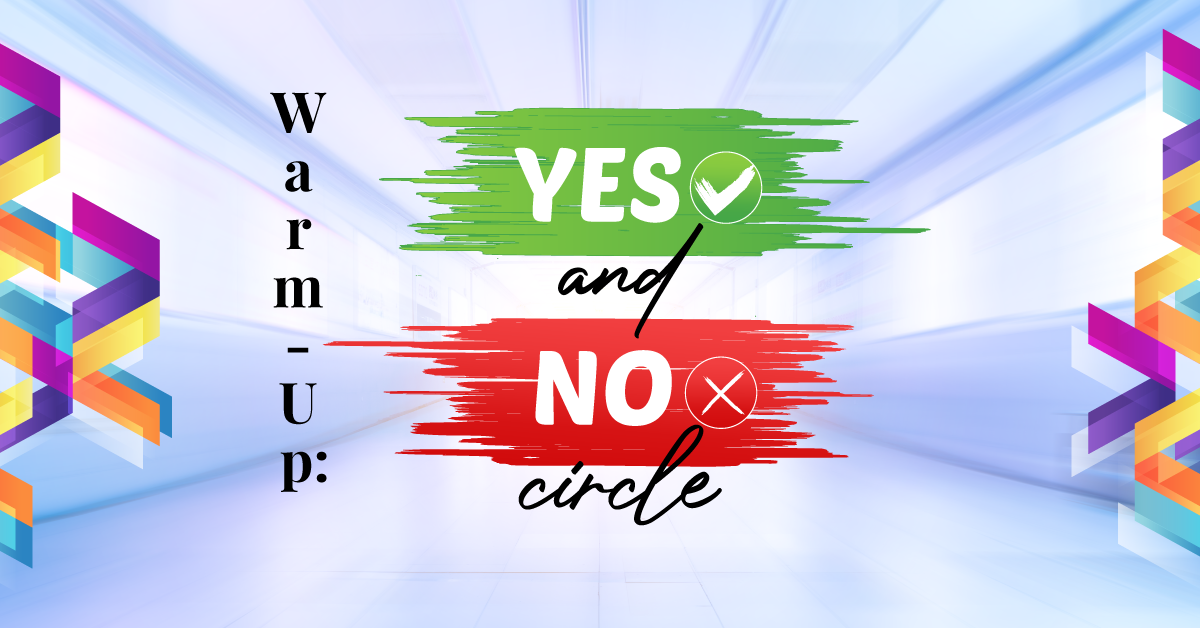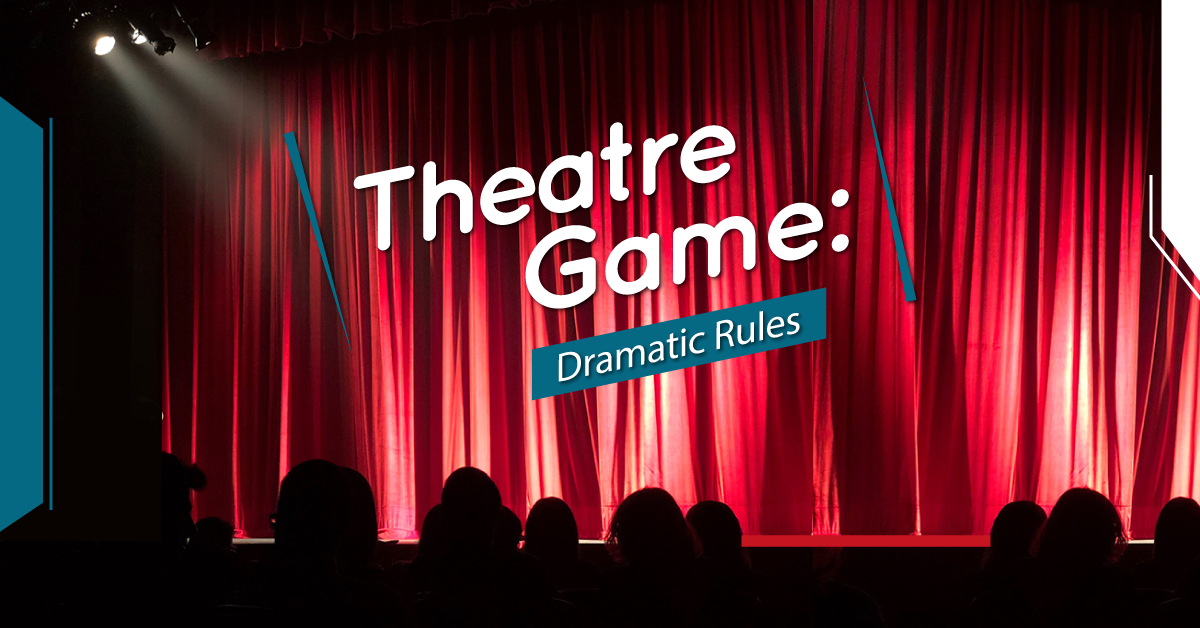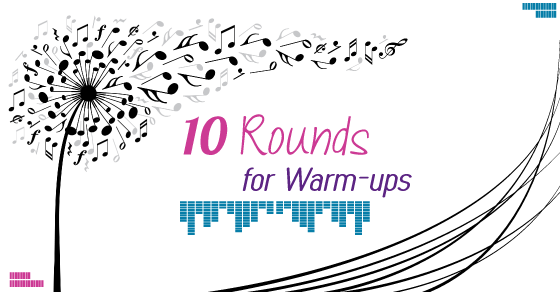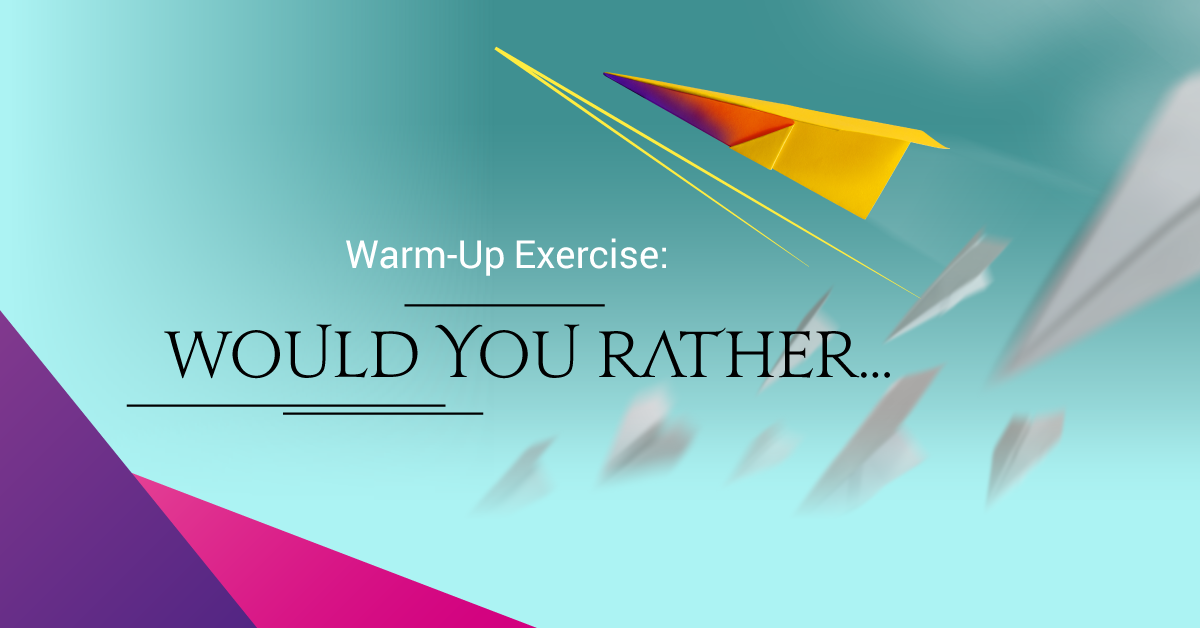Agatha Rex by Lindsay Price is a bold high school take on Antigone - packed with heart, conflict, and a powerhouse ensemble. One girl. One stand. One huge risk. *NEW COMPETITION VERSION AVAILABLE!*
Warm-Up: Yes and No Circle
The following warm-up exercise is simple, but can evoke some powerful feelings and reactions. It’s a great exercise to help students develop their self-awareness and practice consent and boundary setting. It can be completed live in class, or virtually (click the link at the bottom of the article to download virtual instructions).
In-Person Exercise Instructions:
1. Students will sit in a circle. Have one student stand in the middle of the circle.
2. The student in the middle will turn to face any student in the circle, make eye contact, and say that student’s name.
3. The student they name will answer yes or no. Those are the only two choices, and there is no elaboration, explanation, or paraphrasing. Only yes or no.
4. If the student in the circle says yes, they will take the spot of the student in the middle and the student in the middle will take the empty spot in the circle. The new student in the middle will then turn to another student and continue on with the exercise.
5. If the student in the circle says no, the student in the middle will turn to someone else, make eye contact, and say that student’s name. That student will then reply yes or no. If they say yes, they will take the place of the student in the middle (as above). If they say no, the student in the middle will continue to call names until someone says yes and takes their spot in the middle of the circle. Continue playing for as many rounds as you wish.
Simple, right? But the reactions that often arise while working through this exercise are varied and interesting. If time allows, debrief with your students about what emotional and physical reactions surfaced for them, or give them the opportunity to journal about their reactions. Here are some prompts:
- How did you feel saying no to someone (emotionally, physically, or both)?
- How did you feel when someone said no to you?
- Did you feel pressure to answer one way or the other? Why or why not?
- How does this exercise help you in drama class?
- How can this exercise be applied to the real world?
Some of the emotional reactions that commonly arise include worrying if they’ll be stuck in the middle for ages, feeling frustrated by being continually told no, feeling guilty for saying no, feeling obligated or pressured to say yes, feeling like they should give the same response as their friends, or feeling like they need to explain or justify their choice to say no. It can be surprisingly difficult to tell someone no directly! (Teachers, this is a great opportunity to remind students that “no” is a complete sentence.)
Physical reactions might include breathing faster, avoiding or wanting to avoid eye contact, feeling tightness or tension in the body (especially the stomach), feeling itchy or crawly, fidgeting, or clenching the jaw or teeth. It’s also normal to not have any of those physical or emotional reactions, or to have different ones than those listed above. Encourage students to consider why they’re feeling the way they are.
Note: It might be helpful to do a quick stretch, shake-out, or dance party to transition students into a different activity after completing this warm-up exercise, particularly if they are feeling tension in their bodies or uncomfortable feelings.



